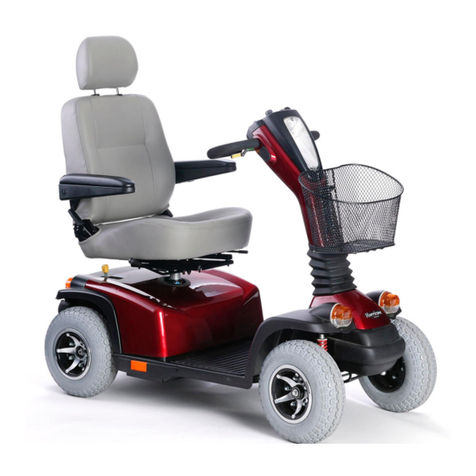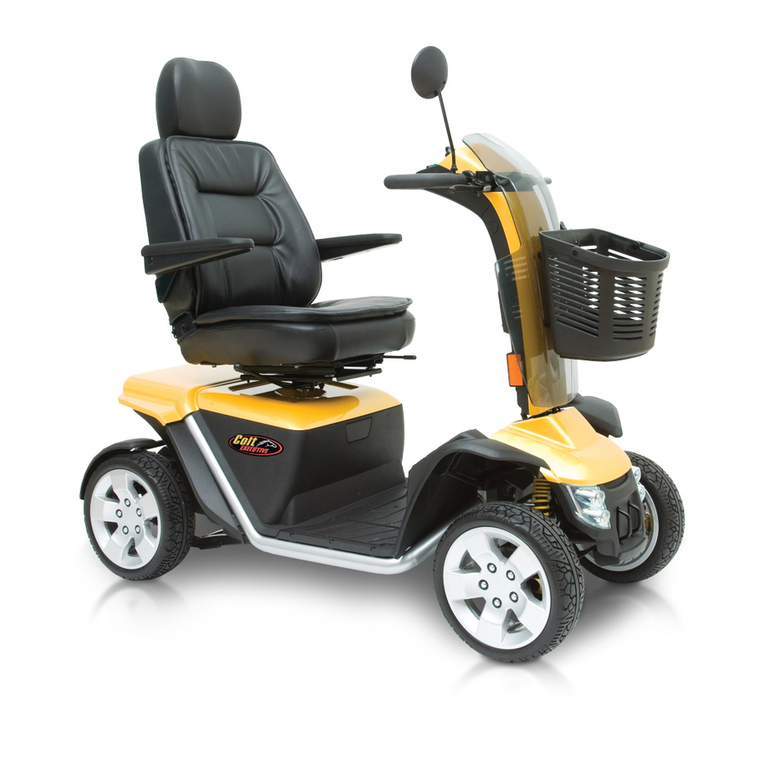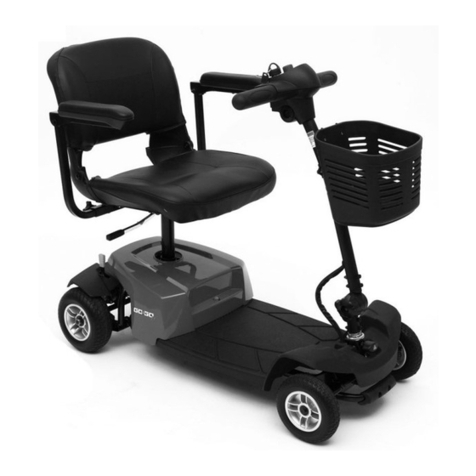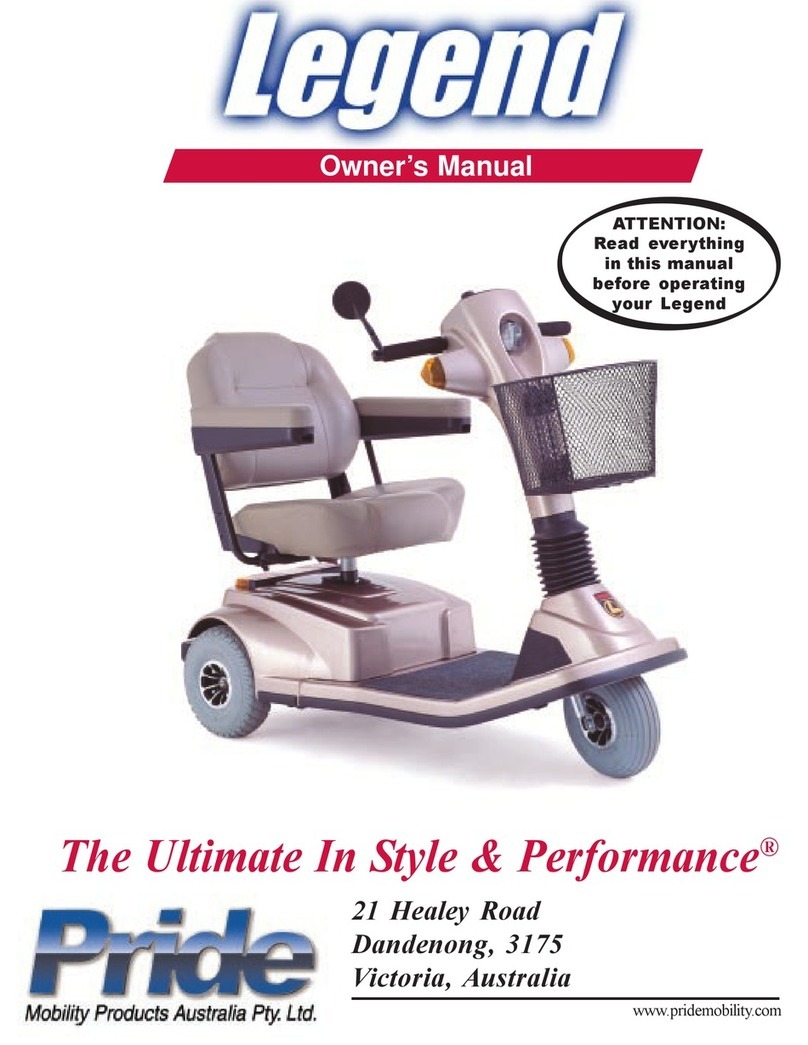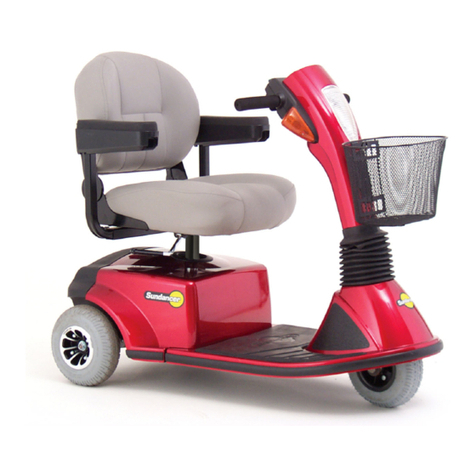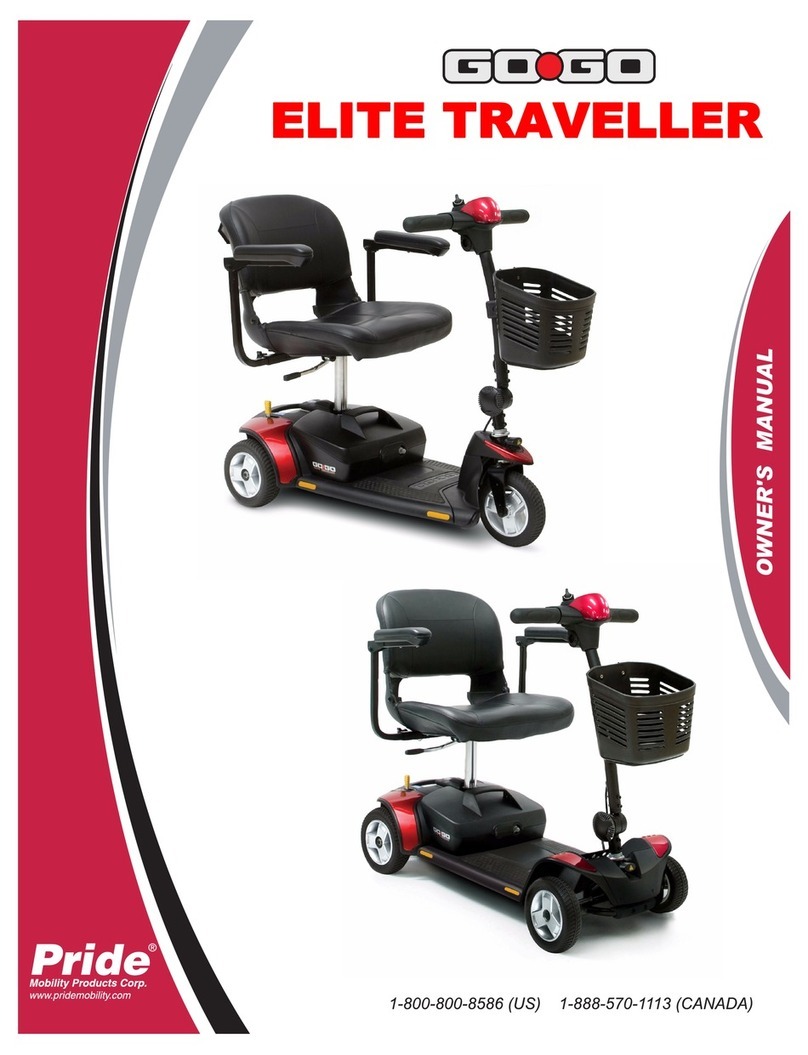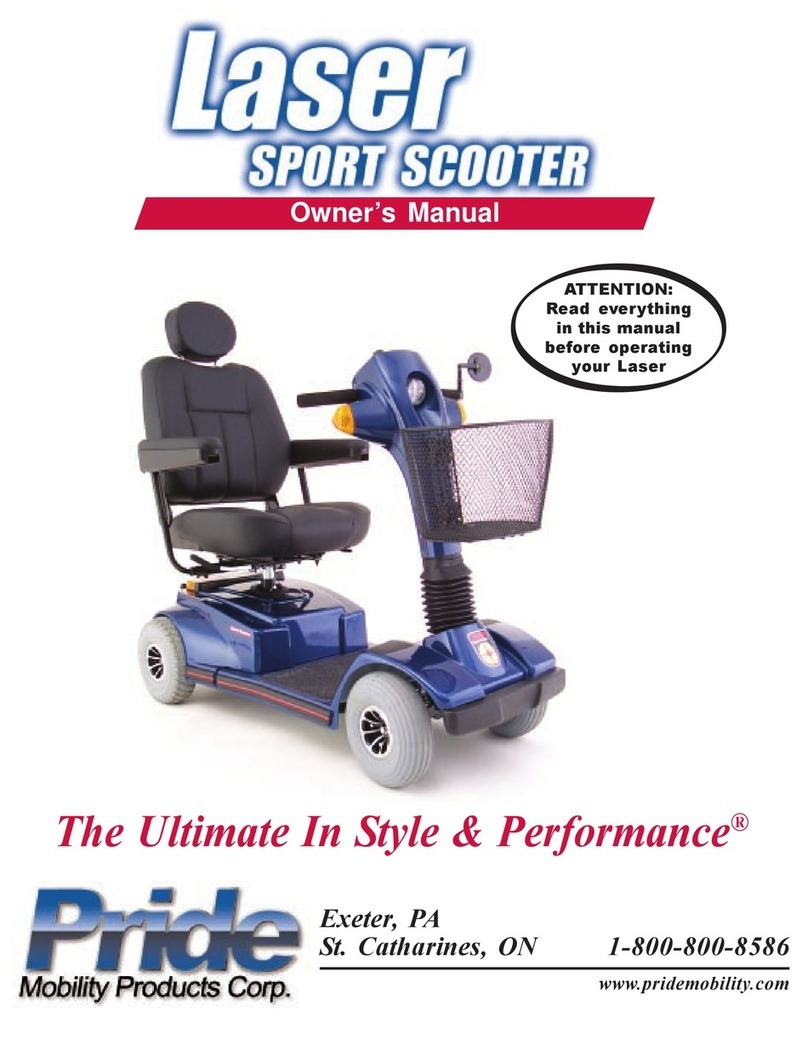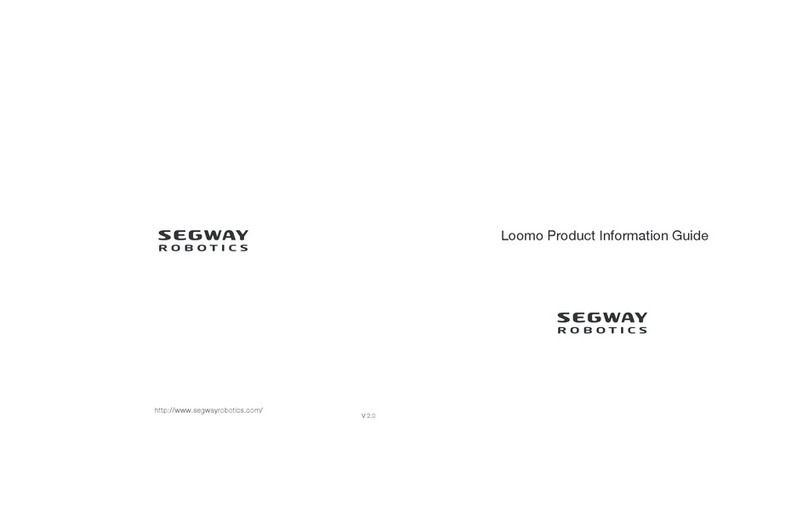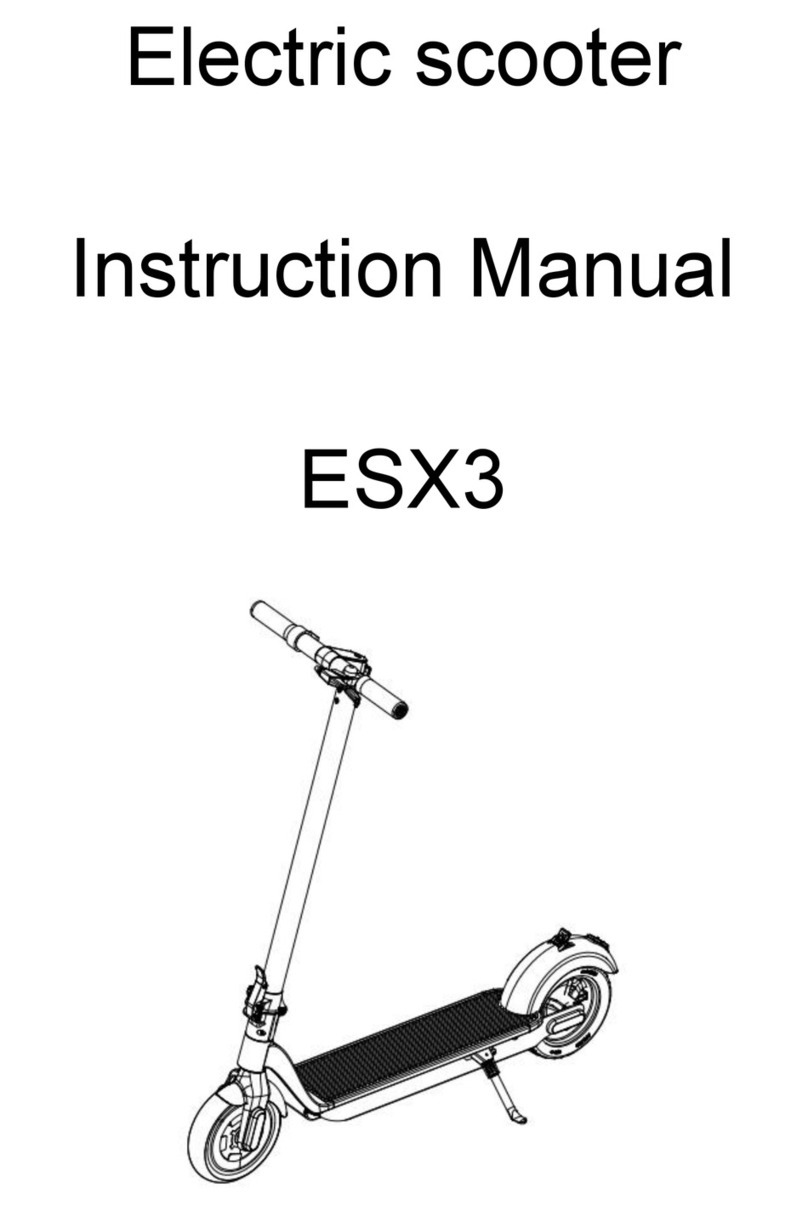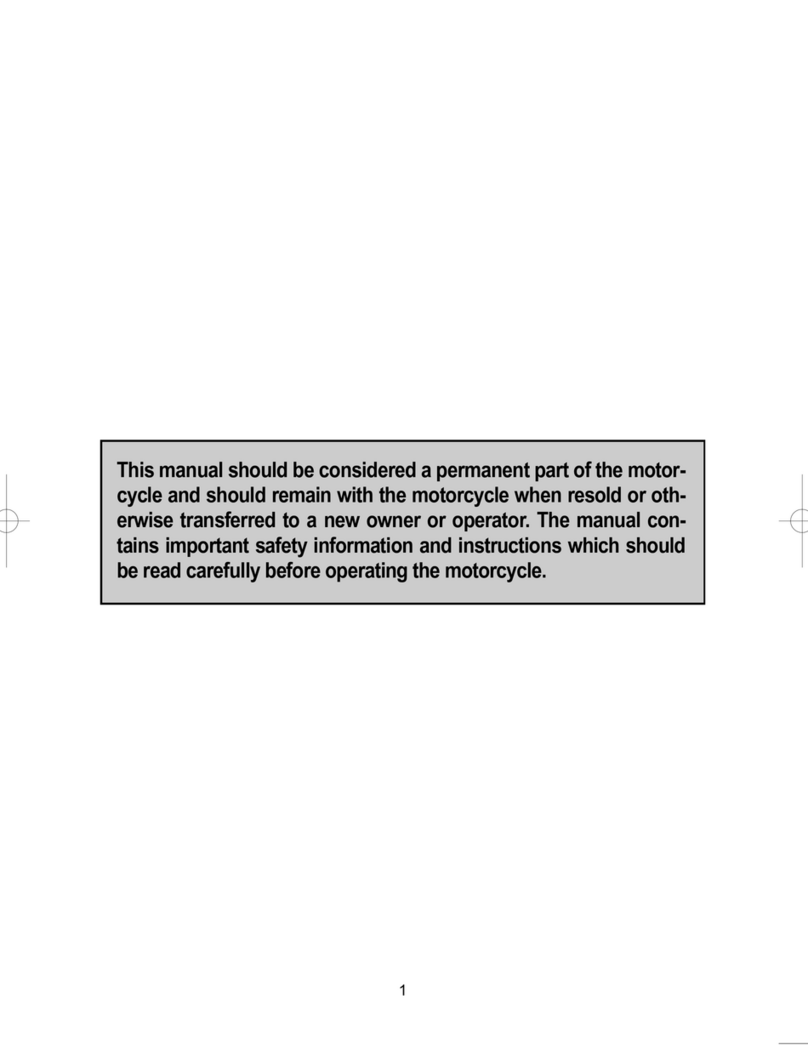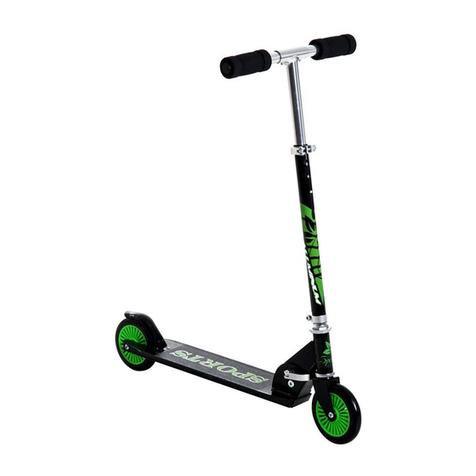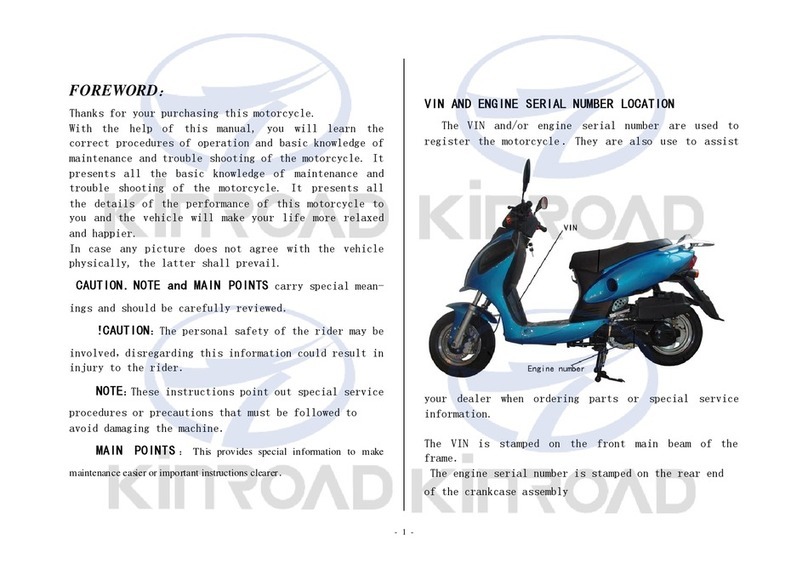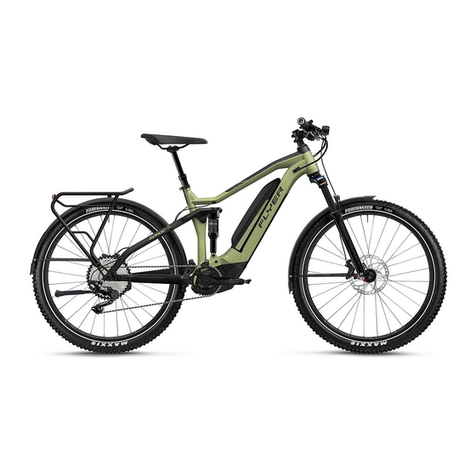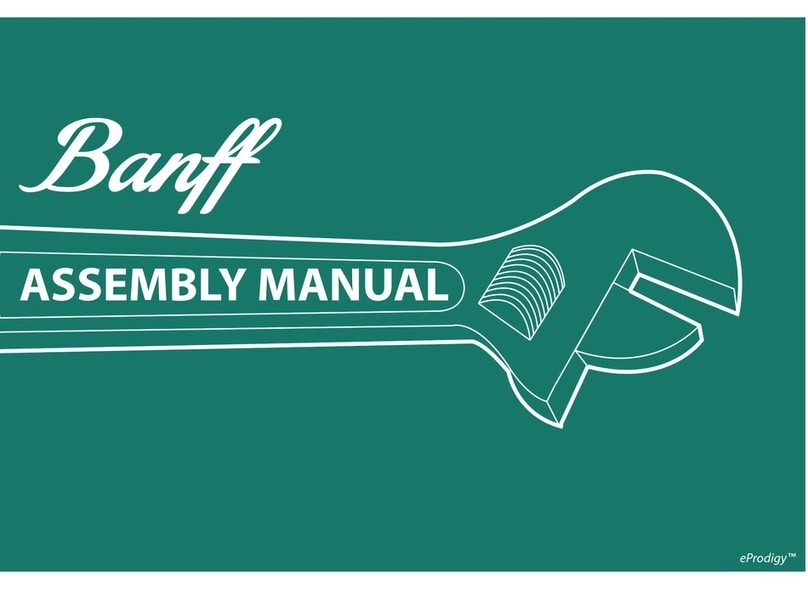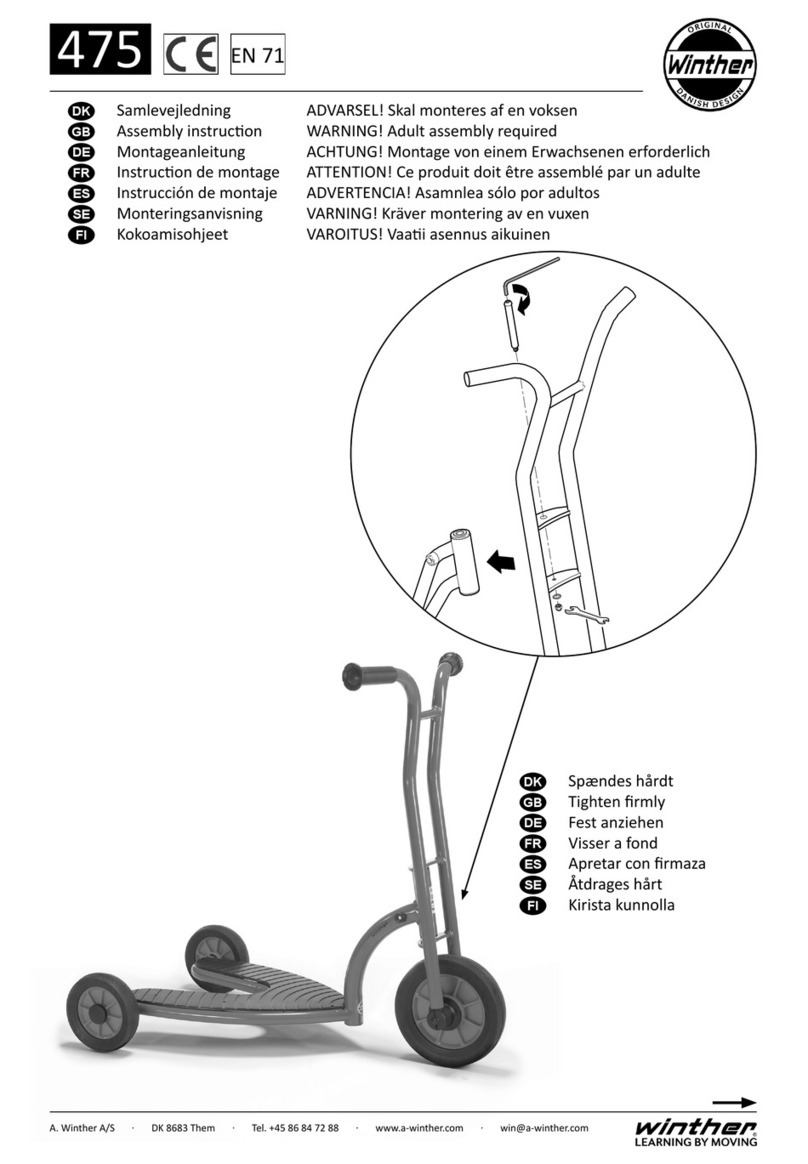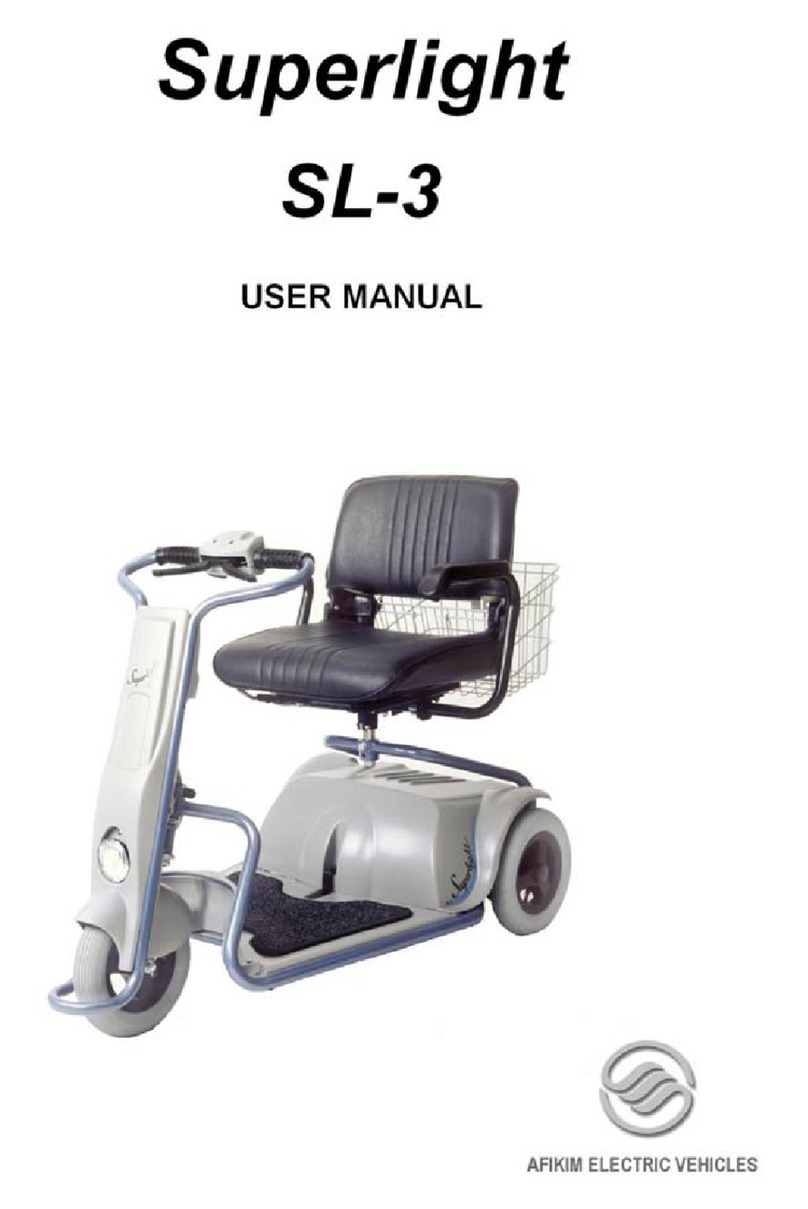
9
Go-GoUltra www.pridemobility.com
II. SAFETY
Figure 1. Maximum Recommended Incline Angles
When climbing an incline, try to keep your scooter moving. If you must stop, start up again slowly, and then
acceleratecautiously.When drivingdownanincline, do so bysettingthespeed adjustment dial to theslowest
settinganddrivingintheforwarddirectiononly.Ifyourscooterstartsto move down the incline faster than you
anticipatedordesired, allow it to come toa completestop byreleasingthethrottlecontrollever.Then push the
throttlecontrol leverforwardslightlytoensureasafely controlleddescent.
WARNING! Any attempt to climb or descend a slope steeper than what is shown in figure 1 may
put your scooter in an unstable position and cause it to tip, resulting in personal injury.
WARNING! When climbing an incline, do not zigzag or drive at an angle up the face of the
incline. Drive your scooter straight up the incline. This greatly reduces the possibility of a
tip or a fall. Always exercise extreme caution when negotiating an incline.
WARNING! Do not drive your scooter across the side of an incline or diagonally up or down
an incline; do not stop, if possible, while driving up or down an incline.
WARNING! You should not travel up or down a potentially hazardous incline (i.e., areas
covered with snow, ice, cut grass, or wet leaves).
WARNING! When on any sort of an incline or decline, never place the scooter in freewheel
mode while seated on it or standing next to it.
WARNING! Even though your scooter is capable of climbing slopes greater than those
illustrated in figure 1, do not, under any circumstances, exceed the incline guidelines or
any other specifications presented in this manual. Doing so could cause instability in your
scooter, resulting in personal injury and/or damage to your scooter.
Handicap public access ramps are not subject to government regulation in all countries, and therefore do not
necessarilyshare thesamestandarddegree ofslope.Otherinclinesmaybenatural or, ifman-made, notdesigned
specificallyforscooters. Figure1illustrates yourscooter’s stabilityanditsabilityto climb gradesundervarious
weightloadsandundercontrolledtestingconditions.
Thesetestswereconducted with the scooter’sseatinthe highest position and adjustedrearwardontheseatbase
toitsfarthest rearward position.Usethisinformationas a guideline.Yourscooter’s abilitytotravelupinclines is
affectedby your weight, your scooter’s speed, your angle of approach to the incline, and your scooter setup.
113 kg/
18 stone
(250 lbs.)
10.5%
91 kg/
14 stone
(200 lbs.)
12.3%
68 kg/
11 stone
(150 lbs.)
14.1%






